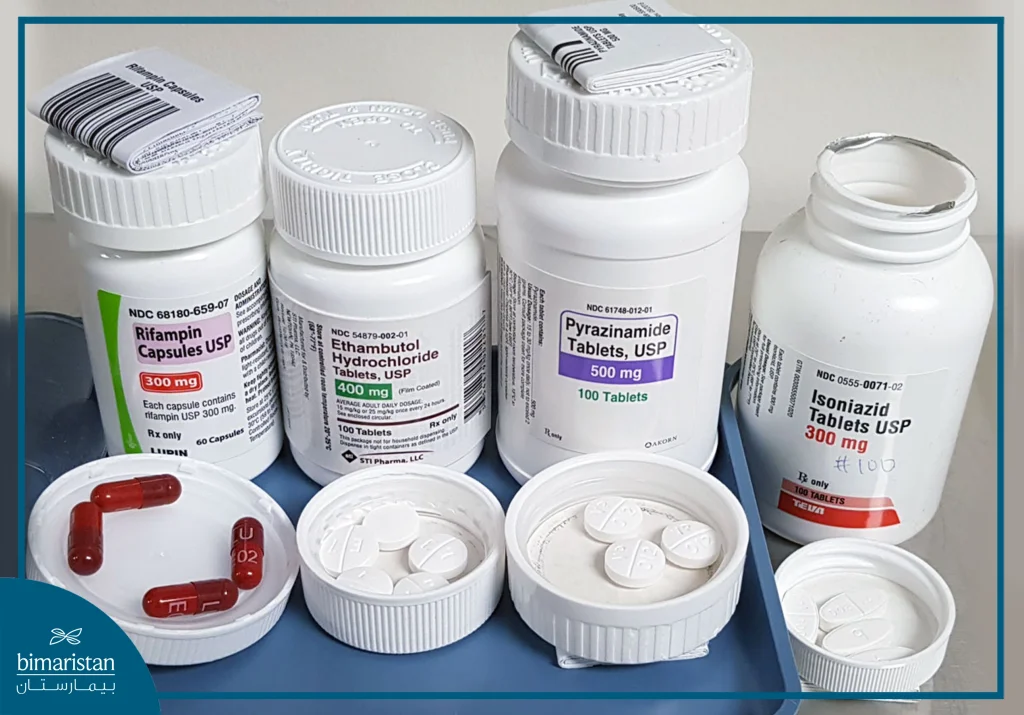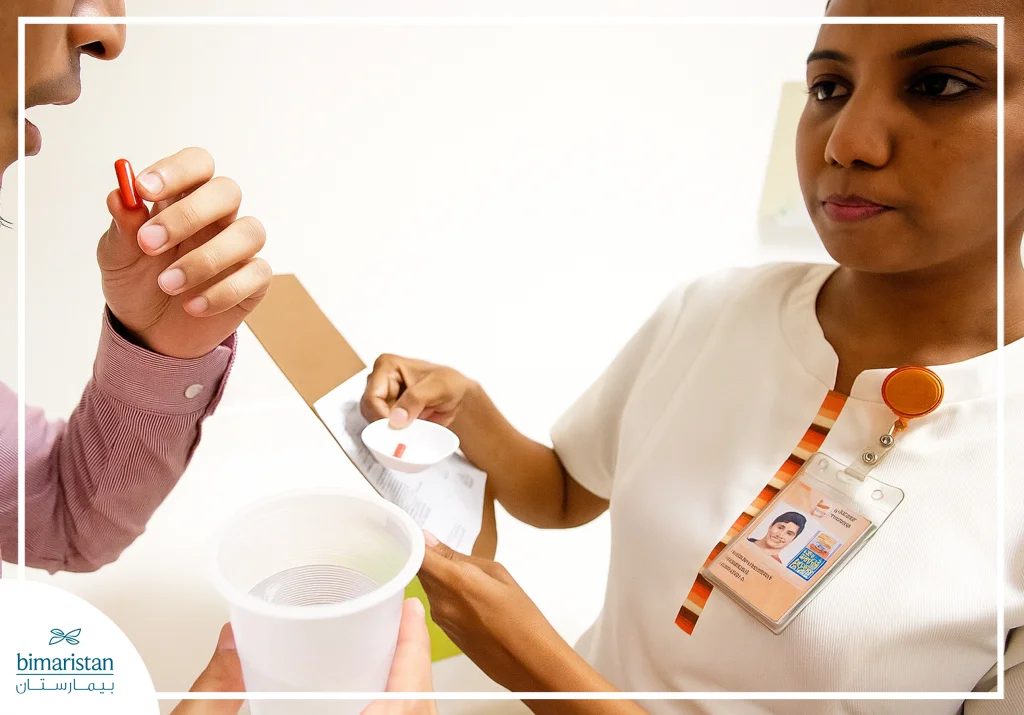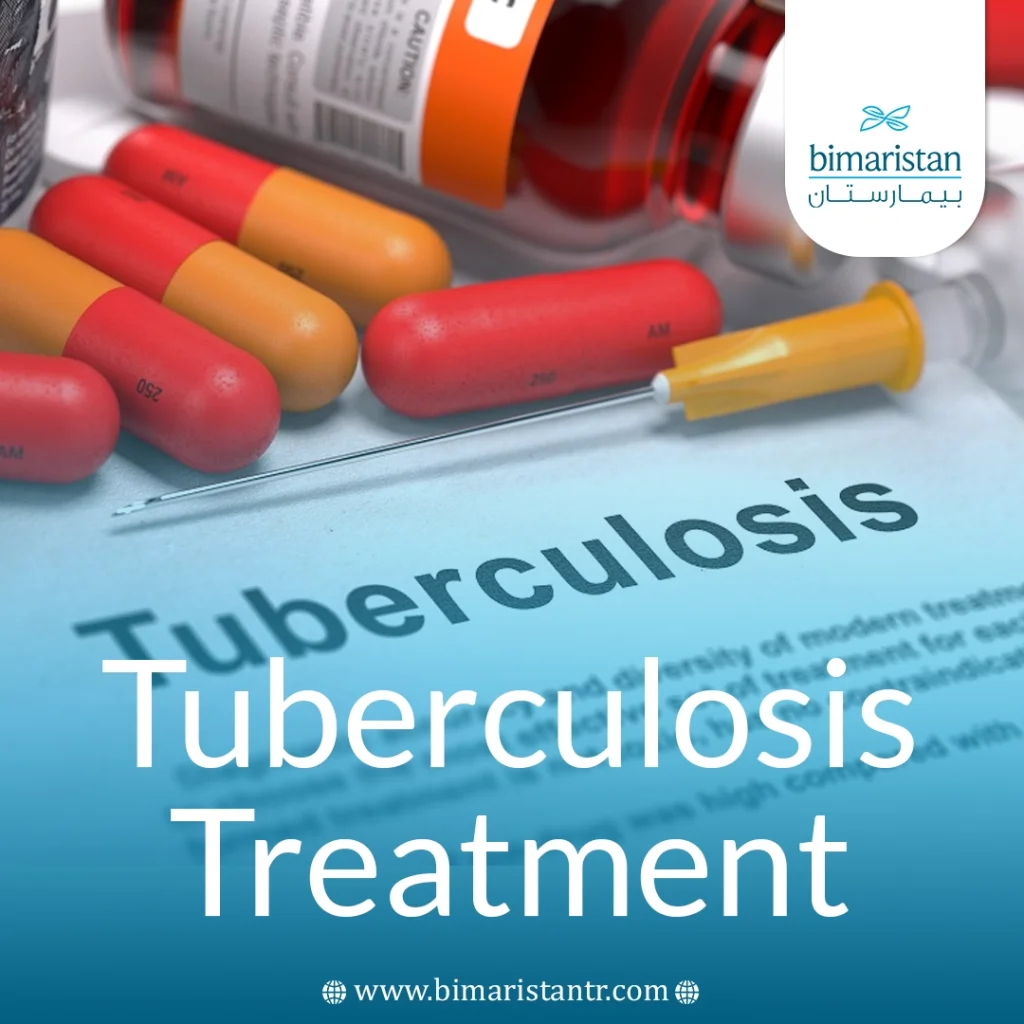Tuberculosis treatment stands as a major achievement in modern medical science. A once widespread and deadly disease is now both treatable and curable with strict adherence to prescribed medications. The World Health Organization (WHO) reports that over 10 million people contract tuberculosis globally each year.
High cure rates are recorded in cases that start treatment early and adhere to it until the end. The success of treatment depends on early diagnosis and timely initiation of treatment, as the drug plan varies according to the type of infection, between active tuberculosis and latent and drug-resistant tuberculosis.
What is tuberculosis?
Tuberculosis (TB) is an infectious disease caused by a bacterium known as Mycobacterium tuberculosis, mostly affecting the lungs but can spread to other organs such as the kidneys, bones, or brain. The disease is transmitted through the air when a person with active TB coughs or sneezes, but the infection does not always turn into an active disease, as it can remain latent in the body for a long time without symptoms. Early detection and regular treatment are the most important steps to control the disease and achieve a full recovery.
Tuberculosis treatment goals
The TB treatment plan aims to achieve full recovery from the infection through a set of integrated goals, starting with eliminating the causative bacterium and preventing its persistence in the body, and extending to breaking the chain of transmission between individuals. The treatment also focuses on preventing the emergence of drug resistance through strict adherence to dosages and regular follow-up, while minimizing side effects and improving the patient’s quality of life even after the end of the treatment period.
Tuberculosis treatment plan by type
The treatment plan for TB varies depending on the type and severity of the infection, as latent TB is not treated in the same way as active or drug-resistant TB, so doctors determine specific protocols for each type to ensure the best treatment results and prevent the spread of the infection.
Treatment of active tuberculosis
Active TB is a symptomatic condition in which the patient is contagious to others, so it requires intensive treatment that combines several anti-TB drugs used under strict medical supervision, and the standard treatment plan includes four main drugs:
- Isoniazid
- Rifampicin
- Pyrazinamide
- Ethambutol
The treatment plan usually lasts for six months and is divided into two main phases:
- Intensive phase: Usually lasts for a couple of months and aims to eliminate most of the active germs in the body.
- Continuation phase: Extends for an additional four months to ensure complete eradication of the bacteria and prevent relapse.
If the bacterium is found to be drug-sensitive, ethambutol can be discontinued after the first two months, and treatment can continue with the remaining drugs. All patients are advised to undergo a Directly Observed Therapy (DOT) program to ensure adherence and not to miss doses. In some cases, switching from daily to twice or thrice weekly doses is allowed after the first few weeks, provided no doses are missed.

Latent tuberculosis treatment
Latent tuberculosis occurs when bacteria infect the body but remain dormant without symptoms or the ability to infect. The goal of treatment is to prevent the latent infection from becoming an active disease. The doctor determines the appropriate plan based on the patient’s age and health condition, including the most common options:
- Isoniazid for 6 to 9 months
- Rifampicin for 4 months
- A combination of isoniazid and rifampicin for 3 months
Adherence to treatment is an effective preventive measure, especially for high-risk groups, such as people in close contact with infected people or immunocompromised patients, such as those living with HIV.
Drug-resistant tuberculosis
Drug-resistant TB occurs when the germs become insensitive to one or more of the main drugs used for treatment, often due to non-adherence to dosing or premature discontinuation of treatment. This condition is more complex and expensive to treat and requires the supervision of a TB specialist and the use of alternative or combination drugs, such as fluoroquinolones (moxifloxacin) and other newer drugs.
In these cases, treatment may extend for several months or even years, with the possibility of side effects that require constant monitoring. Preventing drug resistance by adhering to the prescribed treatment is the best way to avoid this difficult phase.
Medical supervision and the DOT program
Global TB treatment guidelines recommend a patient-centered approach through a Directly Observed Therapy (DOT) program, which is one of the key pillars to ensure treatment success and prevent the development of drug resistance. DOT means that a trained health worker or an authorized health professional (excluding family members) is responsible for administering the medication and watching the patient swallow it on a daily or scheduled basis.
This regimen is especially important for drug-resistant TB patients, people living with HIV, and those on intermittent treatment (two or three times a week). Studies show that treatment adherence reaches 90% with DOT compared to only about 60% for those who rely on self-treatment, making it an effective way to ensure full recovery and minimize the risk of relapse and transmission.
The DOT program is usually implemented by nurses or health workers affiliated with local health directorates and may be implemented in health centers or in patients’ homes under the supervision of the relevant authorities, and is accompanied by a comprehensive case management approach that includes:
- Keeping regular medical appointments
- Patient education about treatment and side effects
- Provide social support or transportation when needed
- Motivate the patient to continue with the treatment until the end
The success of the DOT program depends on building trust and good communication between the patient and the medical team, while respecting privacy and avoiding any negative interaction, which ensures that the patient adheres to the full treatment and achieves a safe recovery.

Common side effects of tuberculosis drugs
Most patients are able to take TB medications without much trouble. Still, some people may experience side effects that vary from person to person, so it is always advisable to report any unusual symptoms to your doctor during treatment.
Minor side effects of tuberculosis drugs
Some people may experience mild symptoms such as rash, nausea, or upset stomach, which can often be relieved by taking the medication with food. Some medications, such as rifampicin or rifapentine, may cause temporary discoloration of body fluids (tears, urine, saliva, sweat, and even breast milk) to turn orange or bright red, which is normal and harmless.
Serious side effects of tuberculosis drugs
If you experience any of the following symptoms, contact your doctor immediately:
- Abdominal pain or persistent nausea and vomiting
- Yellowing of the skin or eyes (jaundice)
- Dizziness or loss of appetite
- Flu-like symptoms
- Numbness or tingling in the hands or feet
The doctor may prescribe vitamin B6 along with isoniazid to reduce the risk of numbness in the limbs, and special considerations are taken in children, pregnant women, and HIV-infected people to ensure the safety of treatment and choose the most appropriate drugs for each case, so treatment must be taken under direct medical supervision and continuous follow-up.
Nutritional support during tuberculosis treatment
During the treatment period, the body needs additional nutritional support to help the immune system fight the disease-causing bacteria and replace the energy and nutrients it loses. People undergoing TB treatment are advised to eat foods rich in protein, such as meat, eggs, and legumes, as well as sources of iron, zinc, and vitamins A, C, and E, which contribute to boosting immunity and accelerating tissue healing. Maintaining good hydration and adequate sleep is also recommended to improve the body’s ability to respond to treatment.
On the other hand, alcohol and medications that stress the liver should be avoided, especially while using essential TB drugs such as isoniazid and rifampicin, and in some cases, the doctor may recommend nutritional supplements to compensate for vitamin or mineral deficiencies. Adherence to a healthy diet is an integral part of successful TB treatment, as it increases the effectiveness of medications and reduces the risk of relapse after treatment ends.
Tuberculosis treatment in Turkey
Turkey attaches great importance to tuberculosis control and treatment programs within the framework of the National Tuberculosis Control Program under the supervision of the Turkish Ministry of Health, which aims at early detection, free treatment, and continuous follow-up for all patients. Turkey has a number of specialized centers and hospitals equipped with modern laboratories for microscopic examination and molecular culture of sputum, in addition to special units to monitor patients while receiving treatment according to WHO protocols.
Treatment is supervised by doctors specializing in pulmonary and infectious diseases to ensure optimal response to treatment and avoid complications. Turkey is one of the leading countries in implementing the DOT system, which has proven to be effective in increasing recovery rates and minimizing the development of drug resistance.
At Bimarestan Medical Center, we help patients coordinate with the best Turkish centers specialized in the treatment of tuberculosis, from accurate diagnosis to medication and nutritional follow-up, to ensure a safe treatment journey and reliable recovery results.
When does a TB patient need to be hospitalized?
Tuberculosis is usually treated at home with a regular follow-up medication program, but some cases require hospitalization for intensive medical care. Hospitalization is recommended in the following cases
- When there are severe respiratory complications, such as bleeding or difficulty breathing
- When it is not possible to safely isolate the patient at home in a way that prevents transmission to others
- In case of suspected drug-resistant tuberculosis that requires close monitoring and special isolation measures
- If the patient is immunocompromised or has comorbidities that require constant medical supervision
Staying in the hospital allows the doctor to monitor the progression of the condition, adjust medication dosages, immediately deal with any serious side effects, and provide psychological and nutritional support to the patient.
Follow-up after tuberculosis treatment
Tuberculosis treatment does not end with the last dose of medication, as regular medical follow-up remains an essential part of ensuring full recovery and preventing re-infection. During and after treatment, the doctor monitors the progress of the condition through blood, urine, and sputum tests that show the body’s response to the drugs and the health of the liver, which may be affected by some drugs such as rifampicin and isoniazid.
After completing treatment, chest radiographs are usually performed every 3 to 6 months during the first year to ensure that the infections are gone and there is no relapse, and in the case of co-morbidities such as diabetes or HIV, follow-up is more accurate to ensure that the infection is fully controlled. Patients are advised to keep an official medical record proving the completion of TB treatment, because some skin or blood tests may remain positive even after recovery, and this documentation helps future doctors interpret the results accurately.
Although most people who have completed treatment do not need to repeat it, re-exposure to someone with active TB can lead to a new infection, so it is important to adhere to prevention measures, maintain good nutrition, and get regular checkups when experiencing any unusual respiratory symptoms.
In conclusion, tuberculosis treatment has become significantly safer and more effective due to advanced drug regimens and ongoing medical oversight. Completing the full course of therapy and maintaining regular check-ins with healthcare providers are key to achieving full recovery and avoiding drug resistance or relapse. Public health education, early diagnosis, and strict compliance with medical guidance continue to be the cornerstones of controlling this illness and reducing its transmission within communities.
Sources:
- Centers for Disease Control and Prevention. (n.d.). Treating tuberculosis.
- American Lung Association. (n.d.). Treating and managing tuberculosis.

